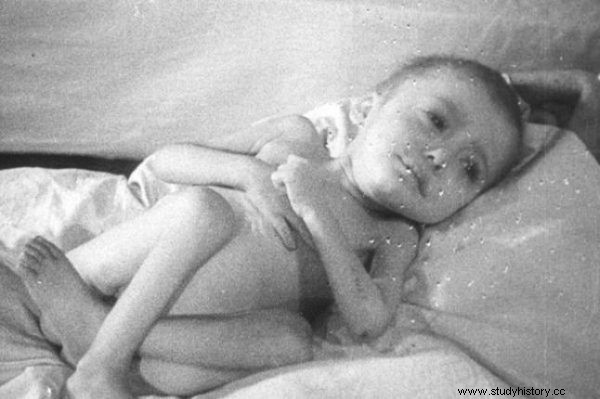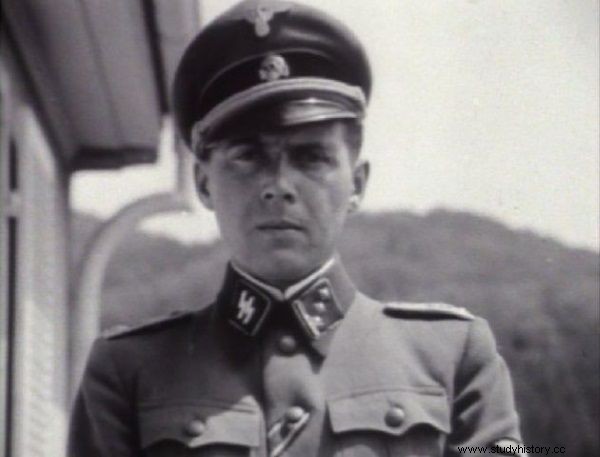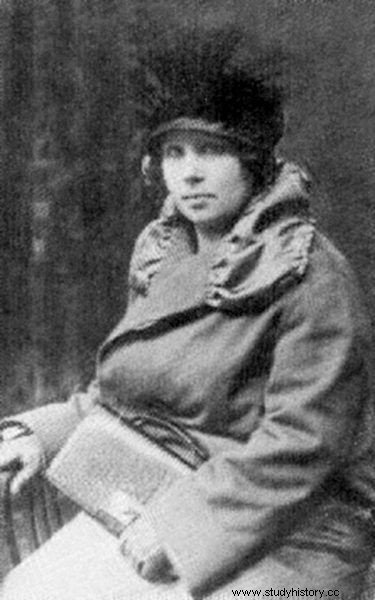We associate the concentration camp in Auschwitz only with death and the chimneys of the crematoria. Meanwhile, life was also beginning behind the barbed wire, and the best camp midwife was able to work miracles. The angel of life amazed the angel of death himself.
Pregnant women were not allowed to be sent to concentration camps. These were the rules, but the Germans, allegedly very attached to the "Ordnung" and rules, repeatedly broke them. There were many pregnant prisoners in Auschwitz. The condition of some of them was not yet visible during transport. In others, the issue was ignored, and there were sporadic cases of fertilization in the camp.
In 1942 and early 1943 women with their abdomen were directed straight into the gas chambers, or were murdered with phenolic injections. The Germans also showed no mercy when the pregnancy came to light after some time. Pregnant women were promised lighter work, more meals - and then killed. They died at the hands of Josef Mengele, among others.
Birth instead of death?
As Lechosław Cebo writes in his book Prisoners in the Nazi camp in Oświęcim-Brzezinka, the situation began to change in mid-1943. Newborn babies stopped being killed, and in 1944 even barracks dedicated to them were built.

One of the babies found in Auschwitz after liberation. Photo public domain.
After birth the infants were entered into the records of prisoners - girls in the women's camp and boys in the men's camp. Like everyone locked behind wires, they were also tattooed with a camp number, usually on their thighs.
A person whose professional calling was to assist in the miracle of birth also fell into the organized death machine of Auschwitz-Birkenau. Stanisława Leszczyńska, a midwife by profession, was sent to the camp for helping Jews. She was very lucky. She managed to take the documents confirming her qualifications, thanks to which she could still help the obstetricians in the shadow of the crematoria. In 1957, she published the book "Report of a midwife from Oświęcim", in which she described what the life of those in labor was like in this gloomy place.
In an article that appeared in Przegląd Lekarski in 1965, she commented:
Extremely numerous vermin of all kinds were exploiting their biological advantage over the declining human lifespan. The victims of the constant worms and rats offensive were not only sick women but also newborn babies.
The fate of both those in labor and their children was deplorable. In this situation, Leszczyńska did her best to ease their pain. She received births on the chimney running along the barracks. Instead of a sterile sheet, she had a dirty blanket that was moving with lice. Nevertheless, she managed to achieve amazing results - her obstetricians and the babies she adopted did not die.

Josef Mengele was the real terror of Auschwitz.
Life-giving effective
The midwife was once called to Mengele for a report. The camp doctor wanted to know the data on the perinatal mortality. When Stanisława Leszczyńska gave him the numbers, he didn't want to believe it.
As she stated years later:
He said that even the best-run clinics at German universities are not so successful. I read anger and hatred in his eyes. It is possible that the extremely devastated organisms were too sterile a medium for bacteria.

Stanisława Leszczyńska in the 1930s. Photo public domain.
What caused such a reaction of the Angel of Death? The Polish midwife managed to successfully receive all the births she conducted. Neither new mothers nor newborn babies died during delivery. Doctors from the Reich did not have similar successes.
***
The article was inspired by Katja Kettu's novel "Akuszerka", which was published by the Świat Książki publishing house. The main character, Krzywe Oko, is a Finn who, following her love (a handsome German officer), volunteers to work in a POW camp. Katja Kettu gives the reader a unique chance to understand what life was like in Lapland after the Second World War.
